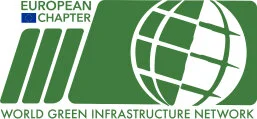Blue and Green Infrastructure Poised to Drive EU Climate Adaptation Strategy
Advertisement
On the 24th of February 2021 the European Commission adopted a new EU Strategy on Adaptation to Climate Change, setting out the pathway to prepare for the unavoidable impacts of climate change on Europe. The strategy fully recognises the multiple benefits of green roofs and walls for climate adaptation and includes the deployment of nature-based solutions for adaptation among its three priorities. The strategy states:
“Blue-green (as opposed to grey) infrastructures are multipurpose, ‘no regret’ solutions which simultaneously provide environmental, social and economic benefits and help build climate resilience. Europe needs to leverage more investments in nature-based solutions to generate gains for adaptation, mitigation, disaster risk reduction, biodiversity, and health.”
The Commission's recognition of the benefits of green roofs and walls in this new adaptation strategy is the last of a series of excellent news for citizens, environmentalists and the businesses along the value chain that are operating in this sector. Earlier this year the European Commission published its Renovation Wave strategy, one of Europe's flagship initiatives to reach the goal to become carbon neutral by 2050. The strategy outlines the EU vision for the building sector and, once again, highlights the “role of roofs and walls to increase the green surface of our cities and improve the urban climate and biodiversity”.
It is now or never. We have a short window to address the devastating impact of climate change on our daily lives and green infrastructure ticks all the boxes. Green infrastructure is good for the environment, great for our health, makes our cities look beautiful and makes economic sense. This is why the recent creation of the European Chapter of the World Green Infrastructure Network is so timely.
Advertisement
The World Green Infrastructure Network, an association of more than 25 green infrastructure associations from around the world, created the Chapter at the beginning of 2020 in order to closely follow European policy and regulatory development in the framework of the European Green Deal. The European Green Deal is an ambitious sustainable growth strategy which wants to transform and decarbonize Europe's economy by 2050. The EU Chapter is supported by three EU leading companies, national and regional green roof and wall associations and some of the finest experts in this area.
The European Parliament Building in Strasbourg, France
The goal of the EU Chapter is to make EU policy and decision makers aware of the multiple benefits of green roofs and walls in urban areas. There are major pieces of legislation due to be revised over the next two years. Two of them stand out because of their relevance: they are the European Urban Waste Water Treatment Directive (UWWTD) and the European Performance of Building Directive (EPBD). It is in the interest of everyone that these directives include specific provisions to address stormwater management and urban runoff and, when technically feasible, to systematically integrate green walls and roofs in all new buildings and in the renovation of the existing building stock.
More Initiatives Are in the Making in the European Union
A bottom-up initiative has recently launched a brainstorming to design the New European Bauhaus, a new concept to shape the built environment around three pillars: sustainability, aesthetic and inclusiveness. In other words, write New European Bauhaus and read green infrastructure!
On biodiversity, the European Commission published its Biodiversity Strategy for 2030. Greening urban and peri-urban areas is a component. Among other things, the strategy calls for a systematic integration of green infrastructures into urban planning, including in public spaces, infrastructure, and the design of buildings and their surroundings. To bring nature back to cities and reward community action, the Commission calls on European cities of at least 20,000 inhabitants to develop ambitious Urban Greening Plans by the end of 2021. These should include measures to create biodiverse and accessible urban forests, parks and gardens; urban farms; green roofs and walls; tree-lined streets; urban meadows; and urban hedges.
There is so much at stake at the moment, and the smartest thing to do right now is to provide a port of call on green infrastructure for policy makers. The EU Chapter of WGIN is there to hear that call. Our support ranges from providing evidence and quantifying benefits and costs of green roofs installations to addressing technical concerns and explaining the full potential of existing systems and solutions. In parallel, we are studying how to develop partnerships, exchange good public affairs practices and how to leverage the learnings and the approaches that we are putting in place in Europe in other regions of the world.
The policy and regulatory frameworks in Europe are evolving fast. Finance, especially the resources from recovery funds, is there and will flow into the economy. NextGenerationEU, Europe’s 750 billion EUR recovery package, will have to include at least 37 per cent of expenditures related to climate action. This is an unprecedented opportunity to transform the built environment. In the decade of climate action, we must all help governments across the world to make greener cities front and centre of their thinking.
Luigi Petito, 45, father of two, is an expert in European public affairs. He is based in Brussels, a cross-roads for international affairs and the European Institutions. In 2019 he was invited to establish and lead the EU Chapter of the World Green Infrastructure Network. Since then he has followed policy and regulatory developments related to green infrastructure and advocates for a more systematic integration of green infrastructure in urban areas.
Email Luigi at luigi.petito@wgin.org or follow the World Green Infrastructure Network on Twitter at @WGINetwork


